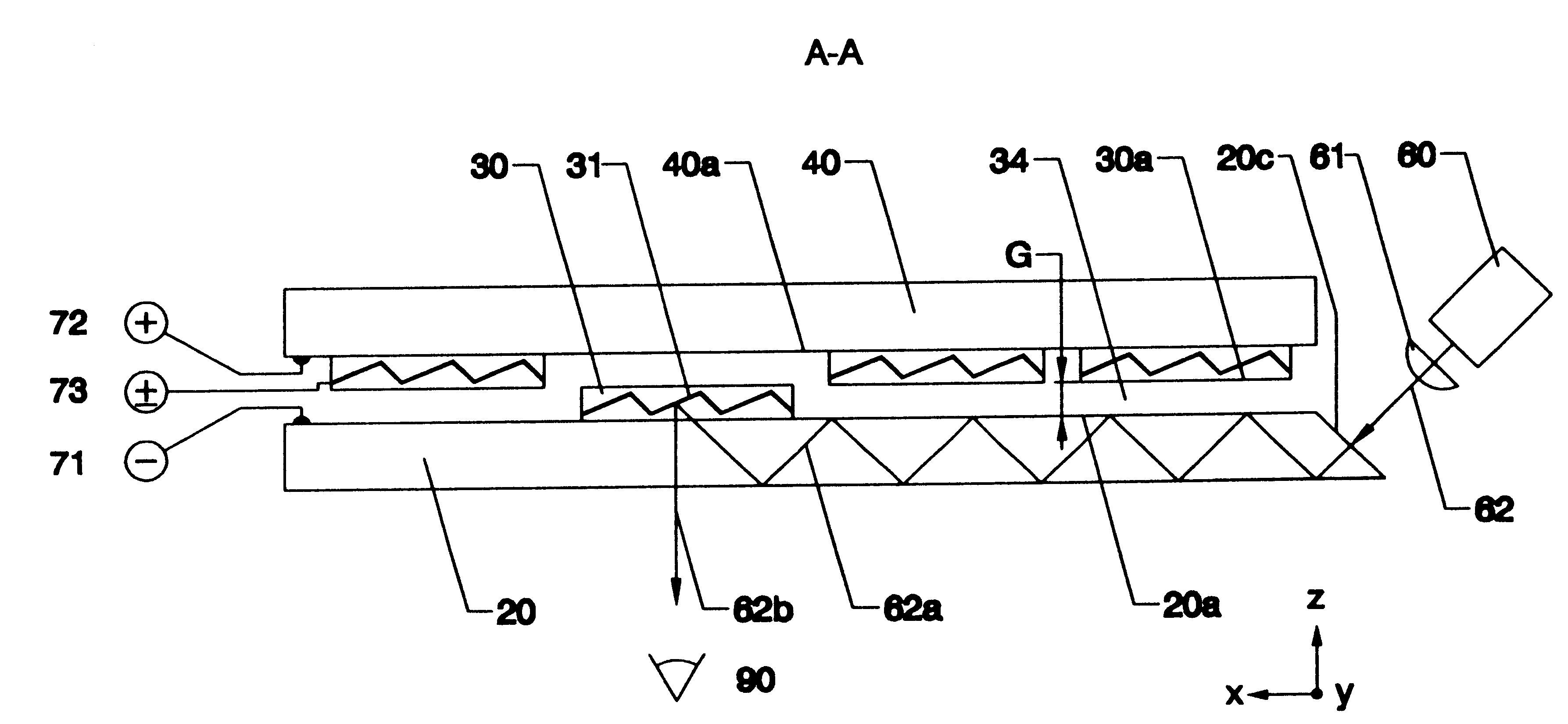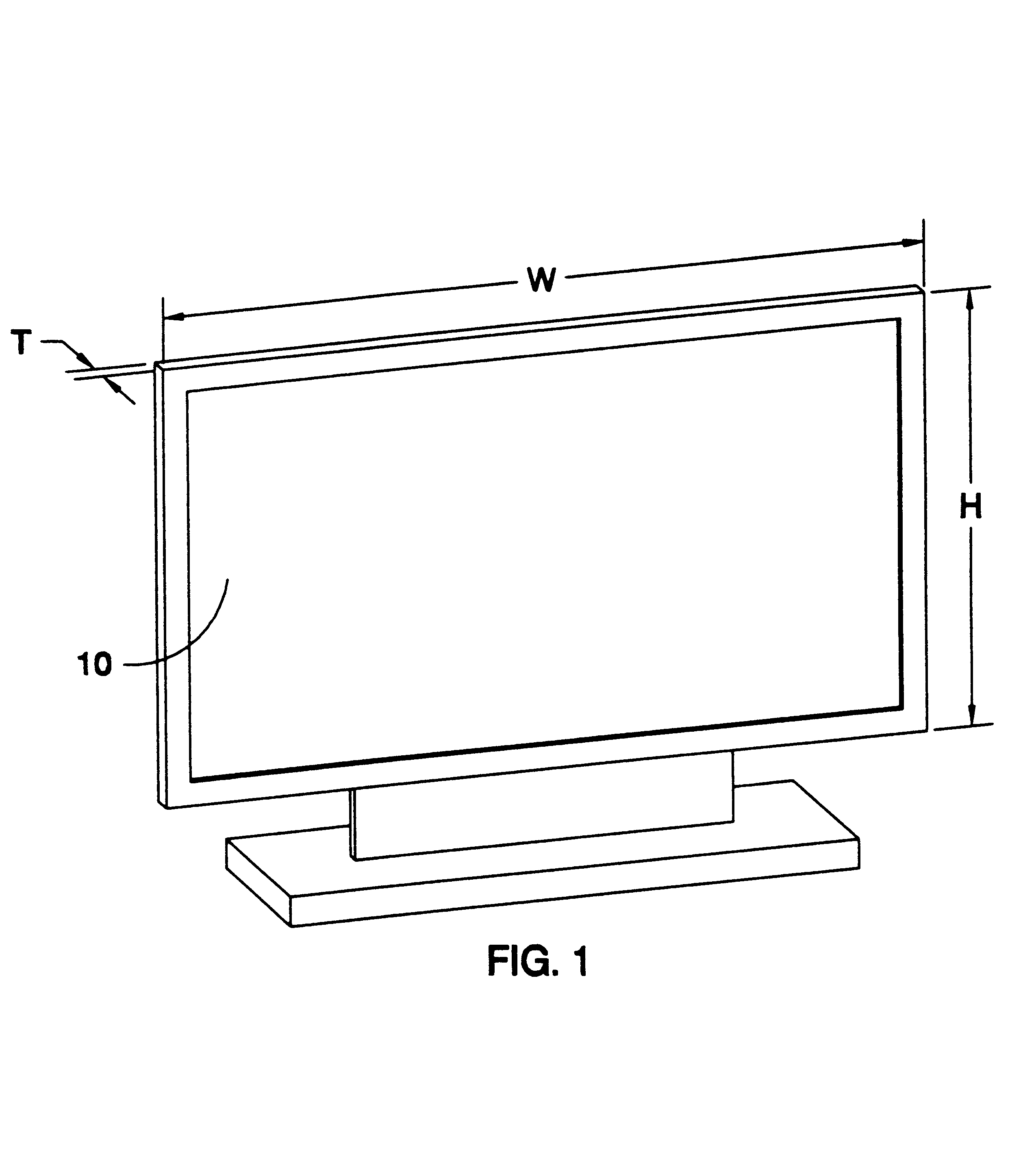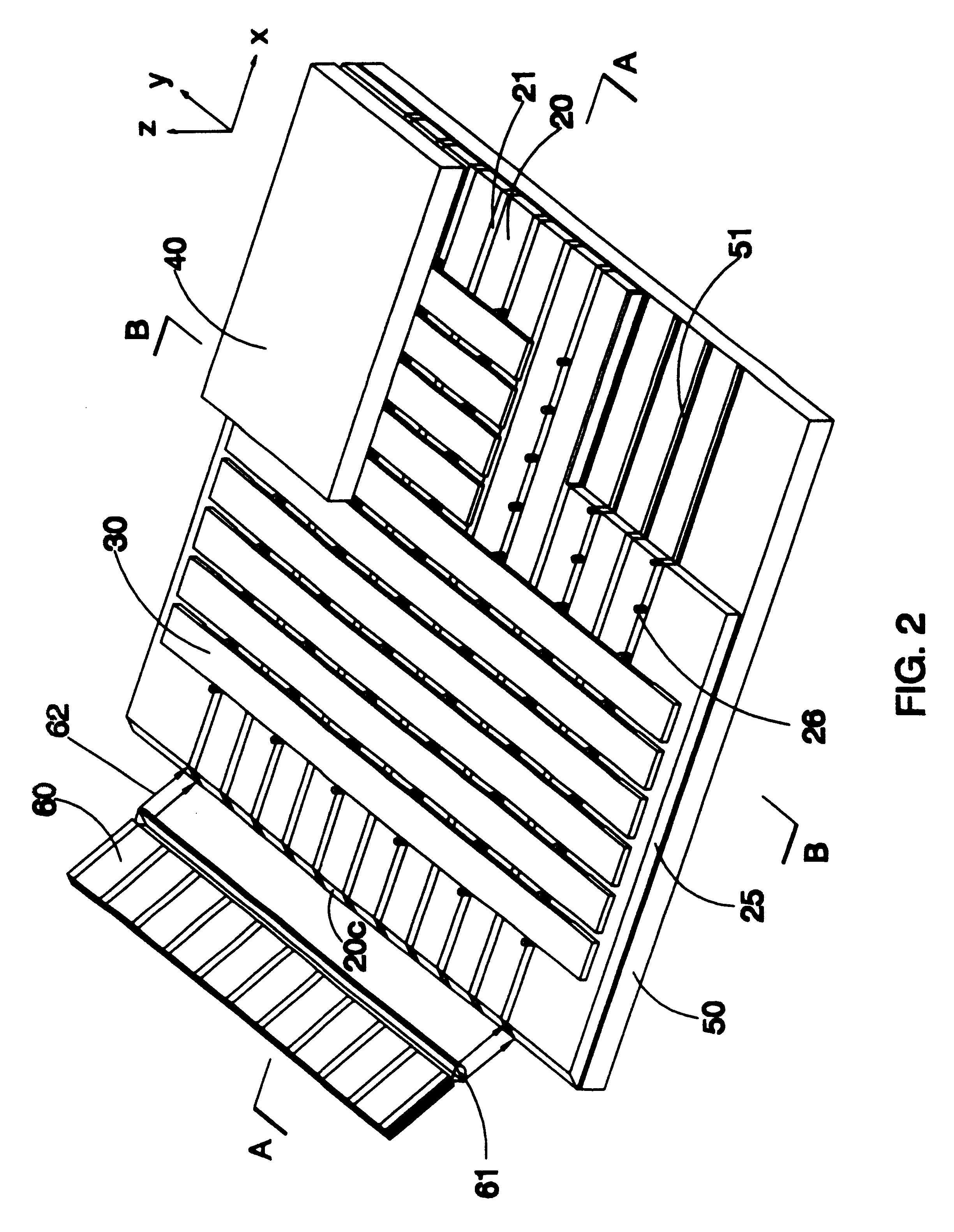Optical device utilizing optical waveguides and mechanical light-switches
a technology of optical waveguides and mechanical lightswitches, which is applied in the direction of optical waveguide light guides, identification means, instruments, etc., can solve the problems of inefficient power utilization, large size of lcd devices, and high cost, and achieves high efficiency and high cost. , the effect of high cos
- Summary
- Abstract
- Description
- Claims
- Application Information
AI Technical Summary
Benefits of technology
Problems solved by technology
Method used
Image
Examples
second embodiment
FIG. 5B shows a channel waveguide assembly. In this embodiment, a transparent conductive film 23 is used as the waveguide electrode. The transparent conductive film 23 is preferably made of indium-tin oxide (ITO) while other transparent conductive materials such as doped zinc oxide may also be used. Low optical absorption and high electrical conductivity of the thin film are very important for achieving a high optical efficiency, low power consumption, and fast switching speed in the display device of the present invention. An insulating thin film 24 may be deposited on top of the transparent conductive film 23 to prevent a direct contact between the transparent conductive film 23 and the bottom surface 30a of light switches 30 (FIG. 3). The insulating material can be chosen from a wide selection of dielectrics, such as SiO.sub.2 and phosphor doped SiO.sub.2. The thickness of the transparent conductive film 23 and the insulating thin film 24 is in the range of thousands of Angstroms...
third embodiment
FIG. 5C shows a channel waveguide assembly. Conductor strips 22 are added in cladding 21 regions. The conductor strips 22 are in electrical contact with a transparent conductive film 23. These conductor strips 22 are preferably made of highly conductive metals, such as aluminum, copper, silver, or gold. They are constructed either as single-layer or as multi-layer films. Multilayer structures, if properly constructed, may provide the advantage of improved adhesion to the cladding 21 materials and to the transparent conductive film 23. A transparent conductive film 23 and an insulating thin film 24 are applied on the surface of the waveguide assembly. The construction principles and the materials selected for these thin films are the same as previously described in FIG. 5B. The main advantage of this embodiment is an enhanced conductivity for the waveguide surface electrode with a maximized electrode area. This will result in a lower driving voltage, lower power consumption, and a fa...
example 1
Diffusive Light Switch Device
A working device based on the use of diffusive light switch shown in FIG. 6C was fabricated as follows. Glass plates of 0.5 mm thick were used as planar waveguides for this device. On a glass plate a 1000-.ANG. thick ITO film and a 1000-.ANG. thick SiO.sub.2 film were deposited using a sputtering process. The ITO and the SiO.sub.2 films served as a waveguide electrode and an insulating layer, respectively, as exemplified in FIG. 5B.
Light switches were fabricated by using a procedure similar to that shown in FIGS. 18A through 18C. An ITO / SiO.sub.2 coated glass plate was used as substrate for the light switch fabrication. A 1.2-.mu.m thick aluminum film was deposited on the substrate surface as a sacrificial layer. The deposition was performed in an electron-beam evaporator. A mixture of TiO.sub.2 pigment and a polyimide precursor (Pyralin SP PI-1111 fluorinated polyamic acid from DuPont) was spin-coated on the aluminum surface. The thickness of this layer...
PUM
 Login to View More
Login to View More Abstract
Description
Claims
Application Information
 Login to View More
Login to View More - R&D
- Intellectual Property
- Life Sciences
- Materials
- Tech Scout
- Unparalleled Data Quality
- Higher Quality Content
- 60% Fewer Hallucinations
Browse by: Latest US Patents, China's latest patents, Technical Efficacy Thesaurus, Application Domain, Technology Topic, Popular Technical Reports.
© 2025 PatSnap. All rights reserved.Legal|Privacy policy|Modern Slavery Act Transparency Statement|Sitemap|About US| Contact US: help@patsnap.com



